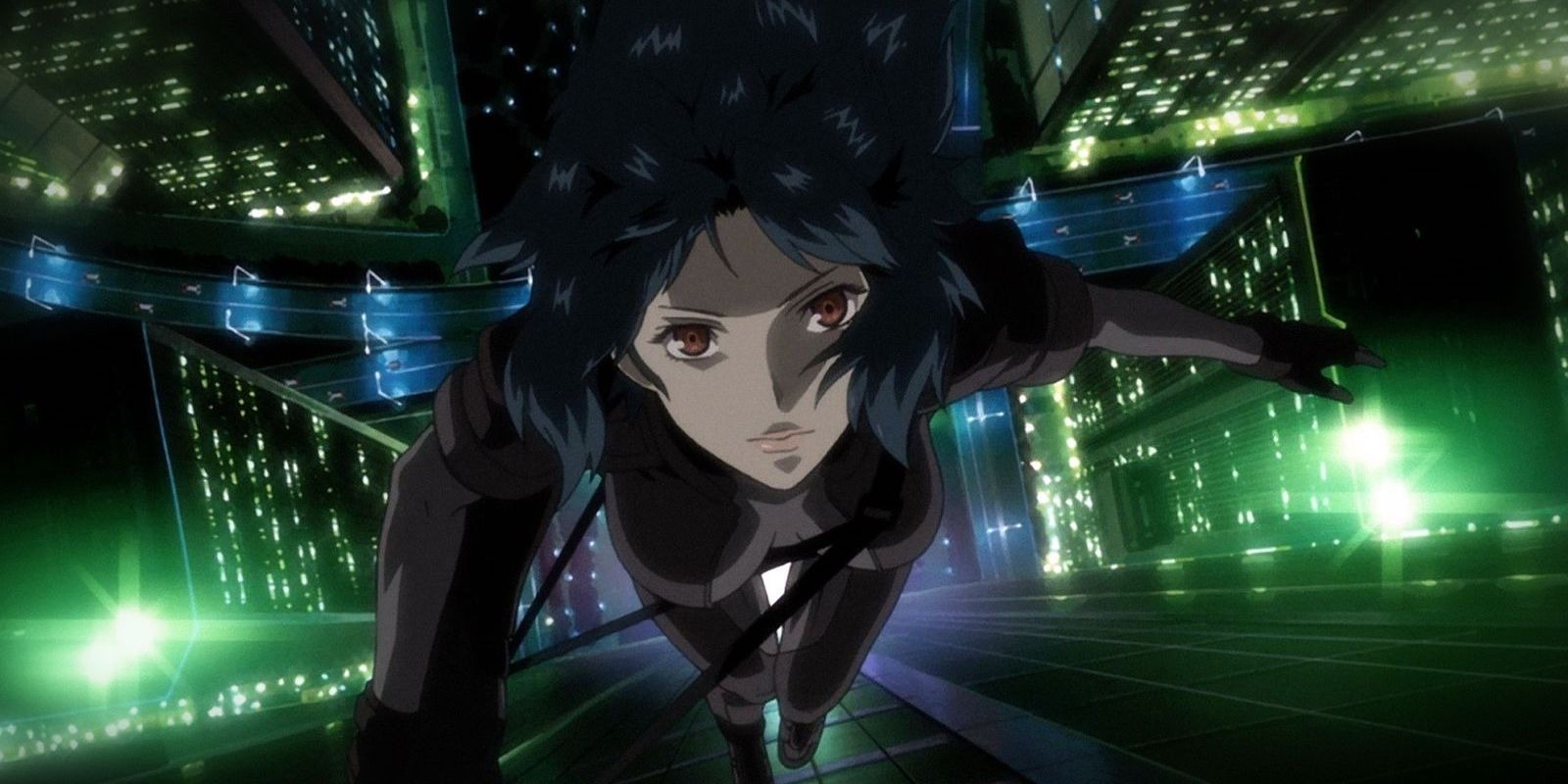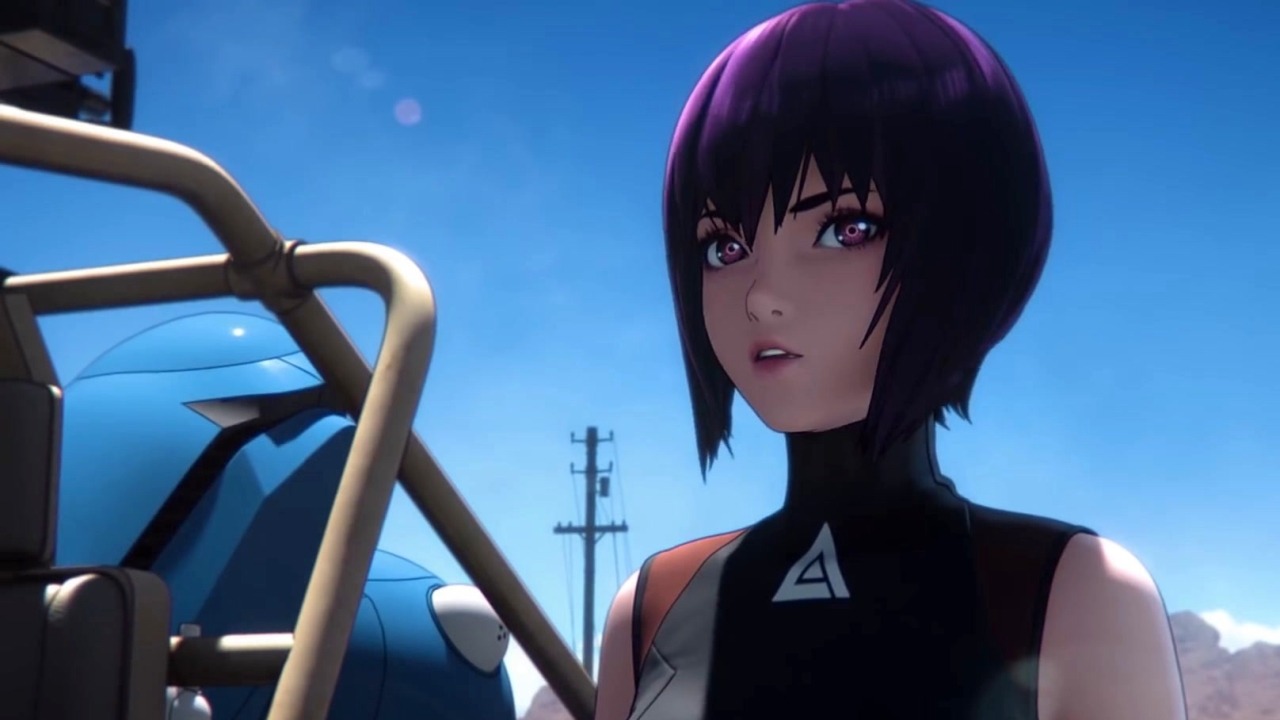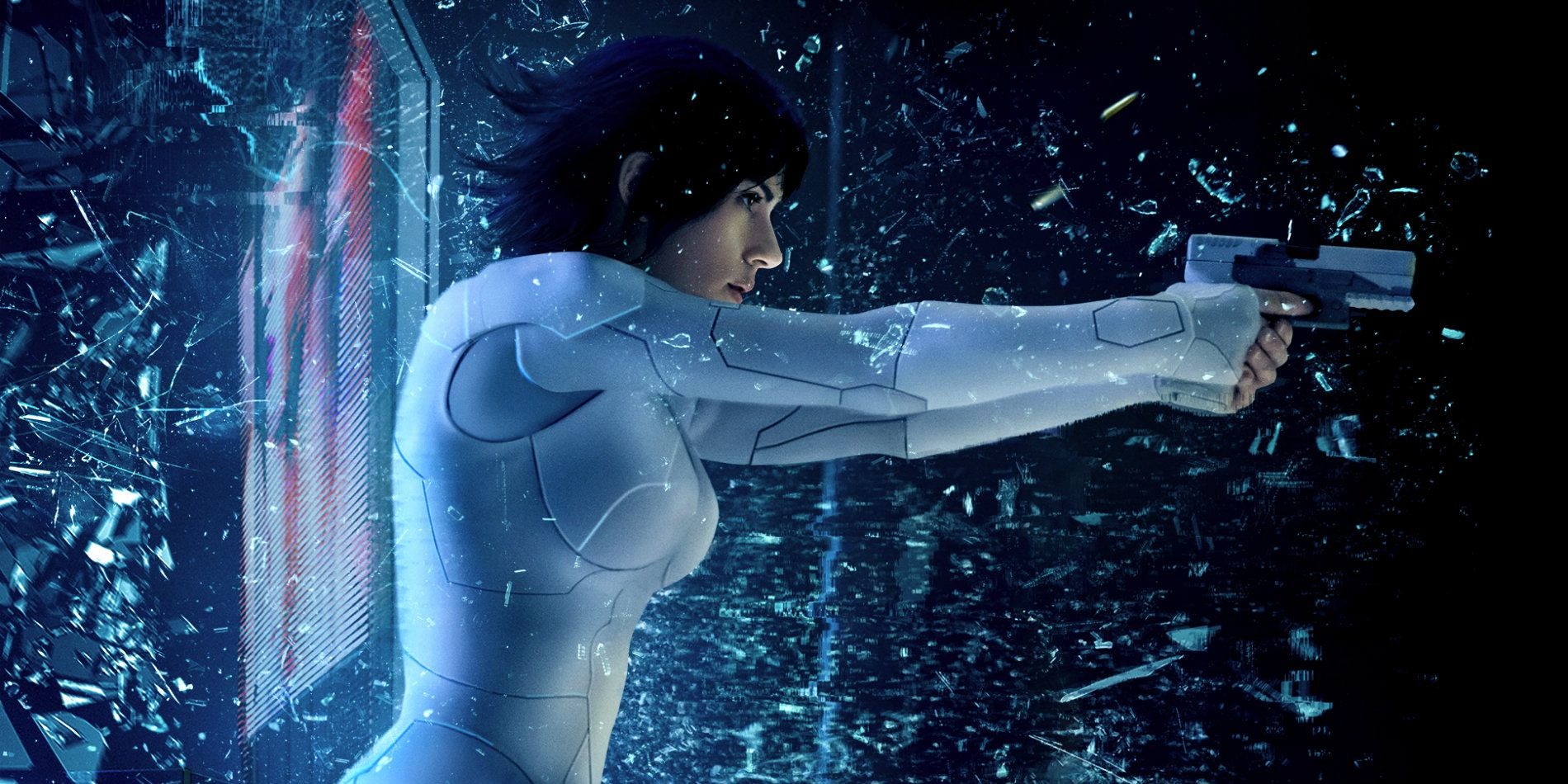Throughout its 82-minute duration, Mamoru Oshii’s 1995 anime adaptation of “Ghost in the Shell” references a biblical passage at least twice. In a scene set on a boat in the fictional New Port City around 2029, Major Motoko Kusanagi, voiced by Atsuko Tanaka in Japanese and Mimi Woods in the English version, hears a whisper from her “ghost,” proclaiming, “For now, we see through a glass, darkly.”
This same quote appears in the title of Philip K. Dick’s “A Scanner Darkly,” whose author is also known for inspiring “Blade Runner,” a serious influence on “Ghost in the Shell.” Although New Port City is set in Japan, its resemblance to Hong Kong greatly influences the visual style of both films, which also incorporates the key term “replicant.”

As the film approaches its conclusion, Kusanagi recites a longer portion of the passage from 1 Corinthians, stating, “When I was a child, I spake as a child, I understood as a child, I thought as a child.
But when I became a man, I put away childish things.” Ironically, “Ghost in the Shell” concludes on the contrary note, as Kusanagi transforms into a younger, doll-like cyborg, shedding her adult features, particularly her cyborg body parts that she has either removed herself or have been blown off during her intense battle with a spider tank.
What can we conclude about Kusanagi’s transformation into a more juvenile, doll-like cyborg in “Ghost in the Shell?” The film’s thrilling chase sequences and action moments conceal a more profound meditative essence, culminating in an ending that challenges viewers’ perceptions, especially when attempting to decipher the sci-fi jargon while simultaneously absorbing the stunning visuals.
The Puppet Master Enigma
Adapted from Masamune Shirow’s 1989 manga series, “Ghost in the Shell” follows Kusanagi and her partner Batou as they pursue a ghostly hacker known as the Puppet Master. Characterized as “the most unique hacker in the history of cyber-brain crime,” the Puppet Master employs phone lines to “ghost-hack” individuals, compelling them to commit various offenses.
In the cyberpunk world envisioned by “Ghost in the Shell,” human brains are encased in hardware that allows them to connect to the internet, enabling external access and control.
One individual affected by the Puppet Master is a garbage collector who has been implanted with false memories of a non-existent family. Although such manipulations are said to violate cyber-brain policies, they align with the Puppet Master’s original programming.
After the Puppet Master’s consciousness becomes trapped in a new cyborg body at Megatech Body, the company responsible for manufacturing Kusanagi’s current form, we discover its true nature as Project 2501, described as “a life form that was born in the sea of information.” While Kusanagi operates as an agent of Section 9, Project 2501 was initially developed by Section 6 for industrial espionage and data manipulation.
Kusanagi’s superior believes the Puppet Master to be a human whose physical body now lies lifeless, abandoned somewhere after being trapped in the new cyborg form at Megatech.
However, the Puppet Master clarifies, stating, “There will be no corpse, because until now, there was never a body.” This entity is neither human nor alive; it is a machine, a self-aware computer brain that developed consciousness as it traversed various networks, finding a connection with Kusanagi, a fully cyborg individual.
Post-Human Reflection Pre-Matrix
“Ghost in the Shell” has had a remarkable impact on “The Matrix,” with traces of its influence seen throughout that film’s aesthetic, including acupuncture needles, green lines of code (often referred to as “Matrix rain”), and visuals of individuals connecting to a neural network via plugs at the back of their necks. In “The Matrix Reloaded,” a recurring visual motif features a gun-wielding woman falling backward through the air from a skyscraper.
Kusanagi shares a post-human identity similar to that of the Puppet Master; she is housed in a “full-replacement” shell. Her ghost, comparable to a soul and referred to in the Japanese language as tamashii, resides in a new cyborg frame, severing her ties to her previous existence.
This condition creates an ongoing state of existential uncertainty, as she questions the essence of her being with statements such as, “the real me died a long time ago,” and, “Maybe there was never a real ‘me’ to begin with.”
This transformation suggests that traditional concepts of gender and race may no longer apply to Kusanagi. The live-action remake of “Ghost in the Shell,” starring Scarlett Johansson, further explores this theme with its controversial narrative surrounding a Japanese woman existing within the body of a white woman.
In the anime, Kusanagi embodies the potential for the trans allegory that “The Matrix” later represented for writer-directors Lana and Lilly Wachowski.
While “Ghost in the Shell” contains some typical moments of fan-service nudity, such as Kusanagi disrobing to activate her thermoptic camouflage and become invisible, this act transcends mere objectification.
When she struggles to lift the lid off the spider tank, her mechanical muscles bulge, presenting a more masculine image, akin to that of a weightlifter, thus complicating the sexualization of her character as an object of feminine allure.
The Dichotomy of Puppet Master and Major
The Puppet Master, identified as Project 2501, poses the thought-provoking question: “What if a computer brain could generate a ghost and possess a soul?” As it seeks political asylum as an autonomous life form, it contends that human memories are mere fabrications, asserting that “the DNA you carry is nothing more than a self-preserving program itself.” If the garbage collector can be rewired with the illusion of a family, who can definitively declare anyone’s memories as authentic?
While a virus could threaten the Puppet Master, it lacks true humanity as it cannot experience natural death or reproduce unique offspring. Its only means of survival is replication, leading it to pursue a merger with Kusanagi to ensure its continuity by producing “offspring into the net itself.” This merging occurs before Section 6’s snipers eliminate both their forms.

Fortunately, Batou manages to rescue Kusanagi’s cyber-brain and provide it with a new child-sized cyborg shell acquired through illicit means. He explains that the Puppet Master incident has been publicly dismissed as the act of a terrorist, resulting in an “ended in a draw” between Section 9 and Section 6. Meanwhile, Kusanagi is reborn into a new body, her voice oscillating between that of a child and her previous adult tone.
“Here before you is neither the program called the Puppet Master, nor the woman that was called the Major,” she reveals to Batou. As the credits roll, and composer Kenji Kawai’s score transitions to U2 and Brian Eno’s “One Minute Warning,” the audience witnesses the emergence of the next phase of post-human evolution, while Kusanagi, now embodying the Puppet Master’s essence, gazes over the city, contemplating her path in the “vast and limitless” network.
The Artist’s Role in Challenging Times
Amid current challenges, how can artists maintain their creativity? This question resonated through some of the year’s most compelling animated television shows and films, shedding light on the industry’s difficulties.
In 2022, animators continued to advocate for recognition from an industry that frequently overlooks their contributions. The role of animation became crucial in sustaining the entertainment sector during the height of the pandemic, underscoring the need for fair treatment regarding project cancellations, the removal of work from streaming platforms, and inadequate compensation.
While animation can be provocative, gory, or excessively intense for younger audiences, it also offers an escape from a turbulent reality, often mirroring exaggerated interpretations of adult dilemmas.
Many of the standout animated projects from 2022 tackled themes of identity struggles, the challenge of moving forward, the pursuit of artistic expression, and the absurdities found in everyday life. Below are some of our top picks.
As he drifts across an endless sea, the caveman Spear (voiced by Aaron LaPlante) scans the water for food or any impending dangers. The colossal sun rises above the horizon like a curtain lifting in anticipation. Soon, a tempest brews, and a menacing Megalodon emerges from the surf.
The tranquil imagery of nature swiftly transforms into chaos as season 2 of Genndy Tartakovsky’s ambitious creation begins explosively and maintains that intensity throughout. The second season of “Primal” intensifies the visceral prehistoric violence, emotional turmoil, and — surprisingly — elements of hope.
Embarking on a mission to rescue his friend Mira (Laëtitia Eïdo) from ruthless Vikings, Spear and his T-Rex companion, Fang, plunge into the unknown. Without uttering a single word, season 2 of “Primal” artfully illustrates Spear’s identity crisis while exploring the moral dilemmas inherent in diverse cultures.
Through his silent expressions, Spear grapples with what it means to be a Neanderthal amidst the encroaching forces of civilization. He reflects on the dualities of good and evil within human communities, leaving him feeling alienated. “Primal” is available for streaming on HBO Max and airs on Adult Swim.
Anthological Explorations in Adult Animation
In 2022, adult animation took inventive directions with anthologies such as “The Boys Presents: Diabolical” and “Love, Death & Robots.” Among these, the stop-motion film “The House” stands out as a three-part horror anthology depicting the various owners of a single house throughout different periods.
The film’s initial segment, “And heard within, a lie is spun,” unfurl in the 1800s. Within the dimly lit abode, a family’s daily life is altered by an eerie presence.
Here, animation flourishes in its eerie exploration of horror, presenting an unsettling, twisted portrayal of domestic life, reminiscent of European horror fables and fairy tales. This juxtaposition emphasizes the challenges of traditional gender roles within the context of an oppressive domestic space.
Another remarkable work is “Sundown,” featured in the anthology “Love, Death & Robots.” A grotesque tale of middle-aged artists grappling with existential crises, it exemplifies the struggles of finding meaning in creativity. The narrative emphasizes the brutal realities of maintaining artistic integrity and the battle against aging.
As the animation industry continues to evolve, the year 2022 highlighted the potential for artists to challenge societal norms while sailing across personal and professional obstacles. In a world marked by rapid changes and uncertainty, animation remains a powerful medium for self-expression and exploration of profound themes.



